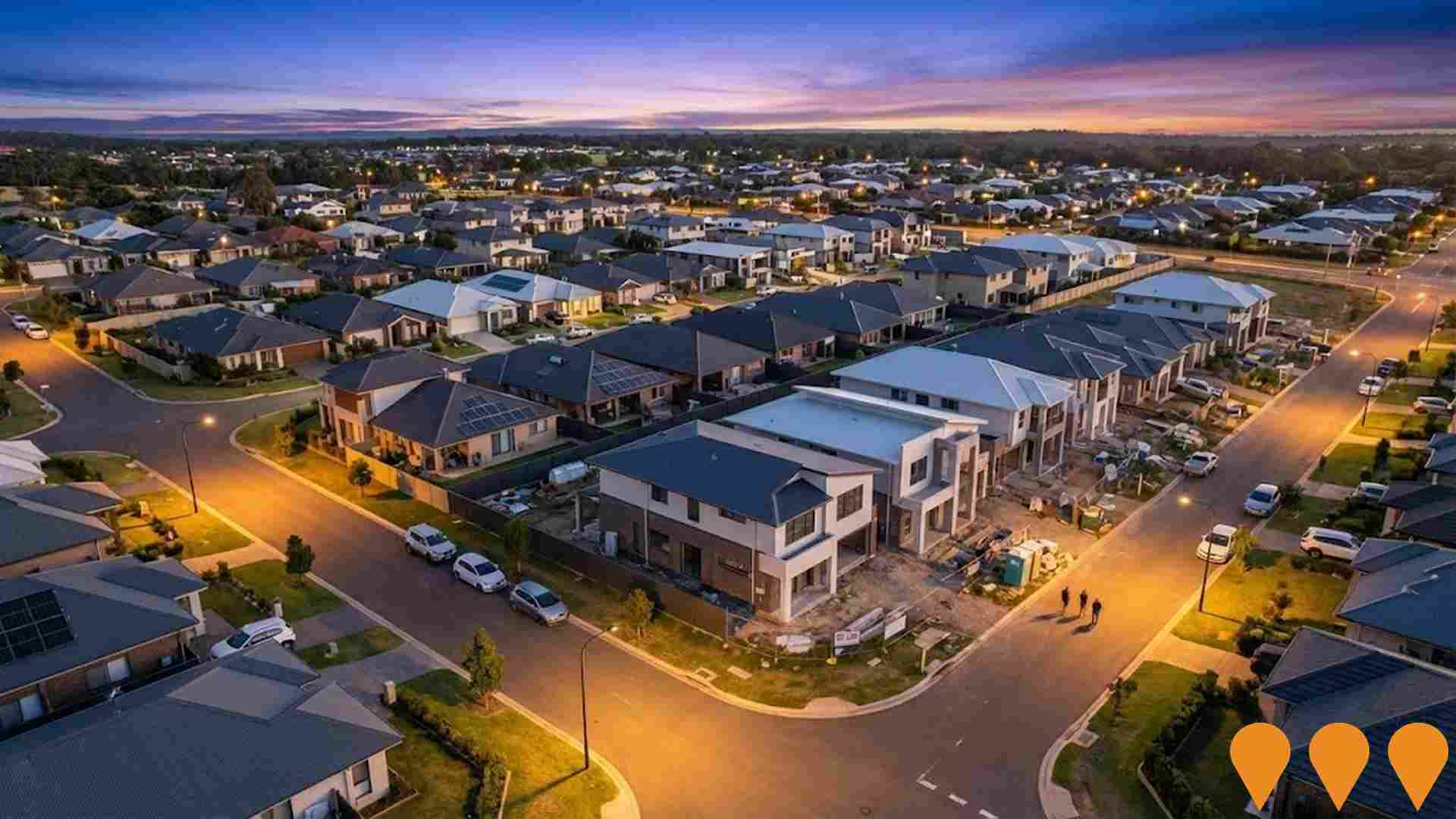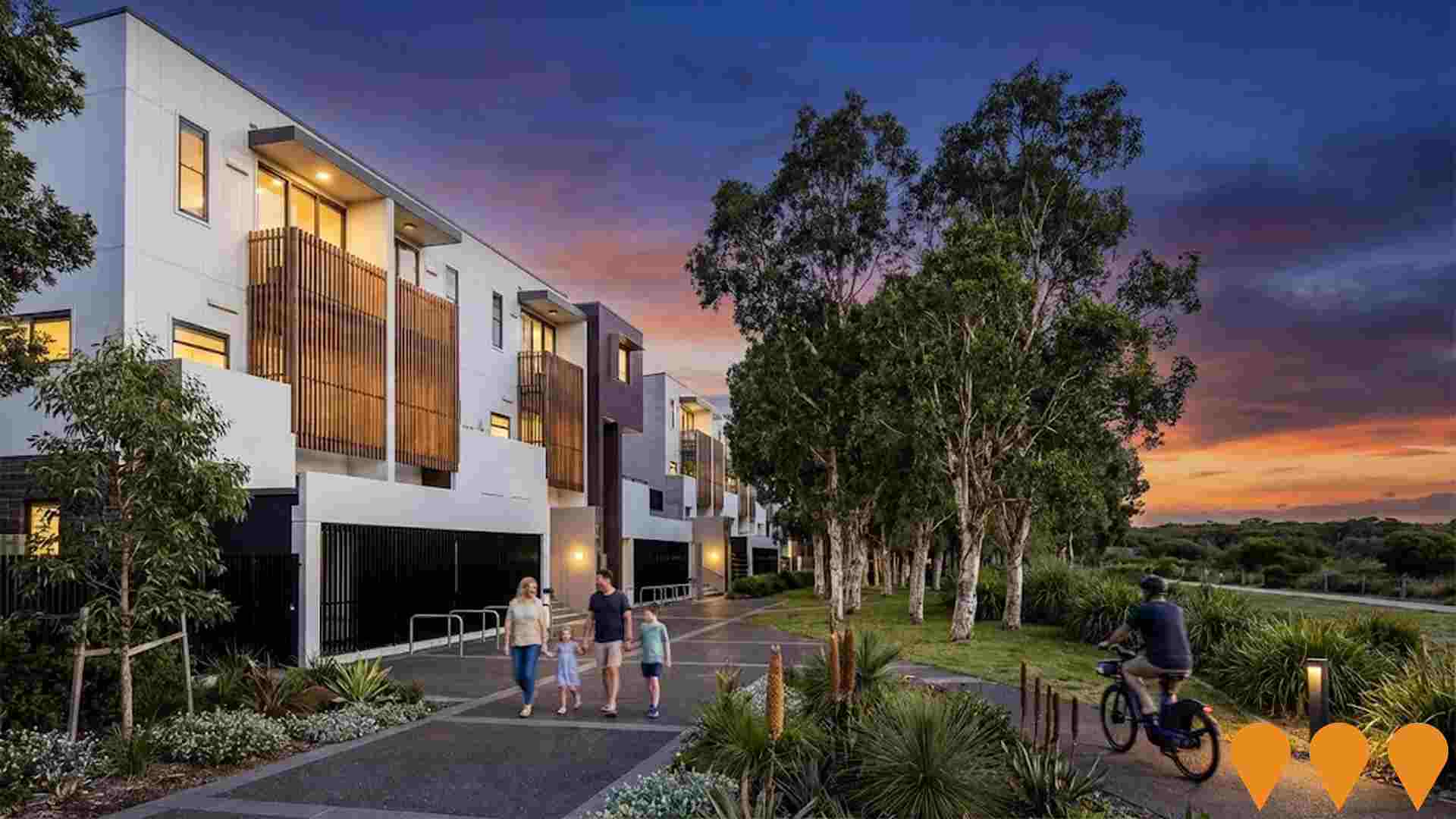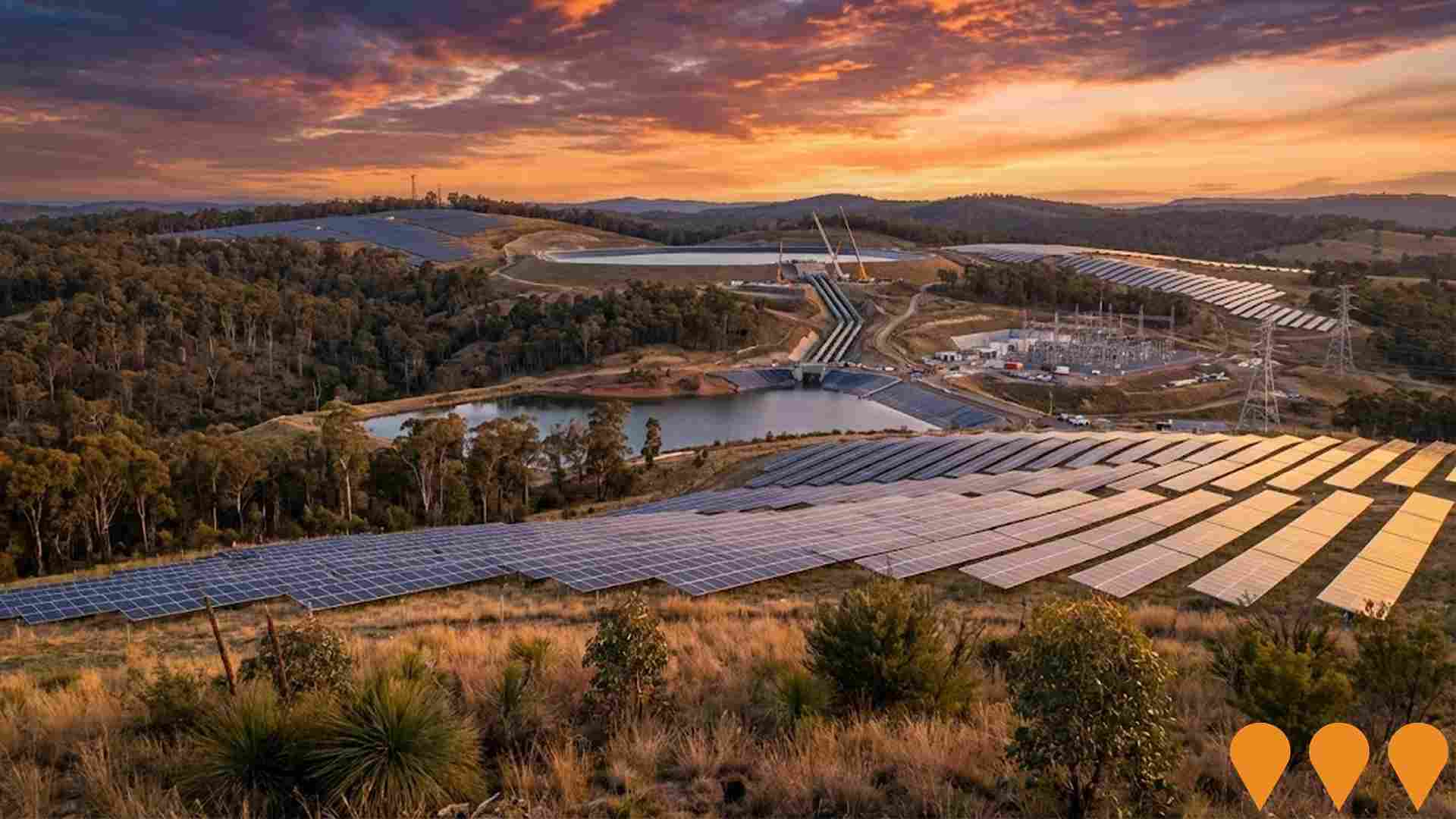Chart Color Schemes
est. as @ -- *
ABS ERP | -- people | --
2021 Census | -- people
Sales Activity
Curious about local property values? Filter the chart to assess the volume and appreciation (including resales) trends and regional comparisons, or scroll to the map below view this information at an individual property level.
Find a Recent Sale
Sales Detail
Population
Bulahdelah - Stroud has seen population growth performance typically on par with national averages when looking at short and medium term trends
Based on AreaSearch's analysis, Bulahdelah - Stroud's population is around 5475 as of November 2025. This reflects an increase of 240 people (4.6%) since the 2021 Census, which reported a population of 5235 people. The change is inferred from the estimated resident population of 5394 from the ABS as of June 2024 and an additional 57 validated new addresses since the Census date. This level of population equates to a density ratio of 2.3 persons per square kilometer, providing ample space per person. Bulahdelah - Stroud's 4.6% growth since the 2021 census exceeded the SA3 area (2.1%), marking it as a growth leader in the region. Population growth for the area was primarily driven by interstate migration, contributing approximately 83.6% of overall population gains during recent periods.
AreaSearch is adopting ABS/Geoscience Australia projections for each SA2 area, released in 2024 with 2022 as the base year. For any SA2 areas not covered by this data, AreaSearch utilises NSW State Government's SA2 level projections, released in 2022 with 2021 as the base year. Growth rates by age group from these aggregations are applied to all areas for years 2032 to 2041. Considering projected demographic shifts, lower quartile growth of Australia's regional areas is anticipated. The area is expected to expand by 61 persons to 2041 based on the latest population numbers, recording a decrease of 0.4% in total over the 17 years.
Frequently Asked Questions - Population
Development
Recent residential development output has been above average within Bulahdelah - Stroud when compared nationally
Bulahdelah-Stroud averaged approximately 23 new dwelling approvals annually over the past five financial years, totalling 118 homes. As of FY-26, 8 approvals have been recorded. On average, 3.3 new residents per year were associated with each home built between FY-21 and FY-25, indicating demand significantly outpacing supply. New properties are constructed at an average expected cost of $342,000.
In FY-26, there have been $1.9 million in commercial approvals, suggesting minimal commercial development activity. Compared to the rest of NSW, Bulahdelah-Stroud records about three-quarters the building activity per person and ranks among the 55th percentile nationally. New development consists predominantly of detached dwellings (95.0%) with a minority of medium and high-density housing (5.0%), maintaining the area's traditional low density character.
With around 283 people per approval, Bulahdelah-Stroud reflects a low density area. Population is expected to remain stable or decline, potentially reducing pressure on housing and creating opportunities for buyers.
Frequently Asked Questions - Development
Infrastructure
Bulahdelah - Stroud has emerging levels of nearby infrastructure activity, ranking in the 38thth percentile nationally
Changes to local infrastructure significantly impact an area's performance. AreaSearch identified 17 projects likely affecting the region. Notable initiatives include the Port Stephens Housing Delivery Program, Stratford Renewable Energy Hub, Port of Newcastle Clean Energy Precinct, and Port Stephens Local Environmental Plan (LEP) & Development Control Plan (DCP). The following list details those most relevant.
Professional plan users can use the search below to filter and access additional projects.
INFRASTRUCTURE SEARCH
 Denotes AI-based impression for illustrative purposes only, not to be taken as definitive under any circumstances. Please follow links and conduct other investigations from the project's source for actual imagery. Developers and project owners wishing us to use original imagery please Contact Us and we will do so.
Denotes AI-based impression for illustrative purposes only, not to be taken as definitive under any circumstances. Please follow links and conduct other investigations from the project's source for actual imagery. Developers and project owners wishing us to use original imagery please Contact Us and we will do so.
Frequently Asked Questions - Infrastructure
Port of Newcastle Clean Energy Precinct
220-hectare clean energy precinct on Kooragang Island enabling production, storage and export of green hydrogen and green ammonia through common-user infrastructure. Front-End Engineering Design (FEED) and Environmental Impact Statement (EIS) are progressing. Final concept designs released July 2025. Secured $100m Commonwealth funding plus additional support for the broader Hunter Hydrogen Hub. Targeting first operations 2028-2030, positioning Newcastle as Australia's leading clean energy export hub.

Forster Tuncurry Health Facility (Lower Mid North Coast Health Service Project)
A new public health facility for the Forster-Tuncurry area is being planned as part of the broader Lower Mid North Coast Health Service Project (combined with Manning Base Hospital Stage 2 redevelopment). The Forster facility will deliver emergency department, inpatient beds, outpatient and ambulatory care services. Site options are being evaluated near the existing Forster Private Hospital. Health Infrastructure NSW is leading planning and community consultation in partnership with Hunter New England Local Health District.

Forster Civic Precinct - Solaris
A completed mixed-use development providing new council facilities including a 2,000m2 public library, visitor information centre, customer service centre, flexible community spaces accommodating 200+ people, conference rooms, and underground parking. The civic facilities opened to the public on October 9, 2023. Future stages include seniors living apartments and retail facilities by the developer.
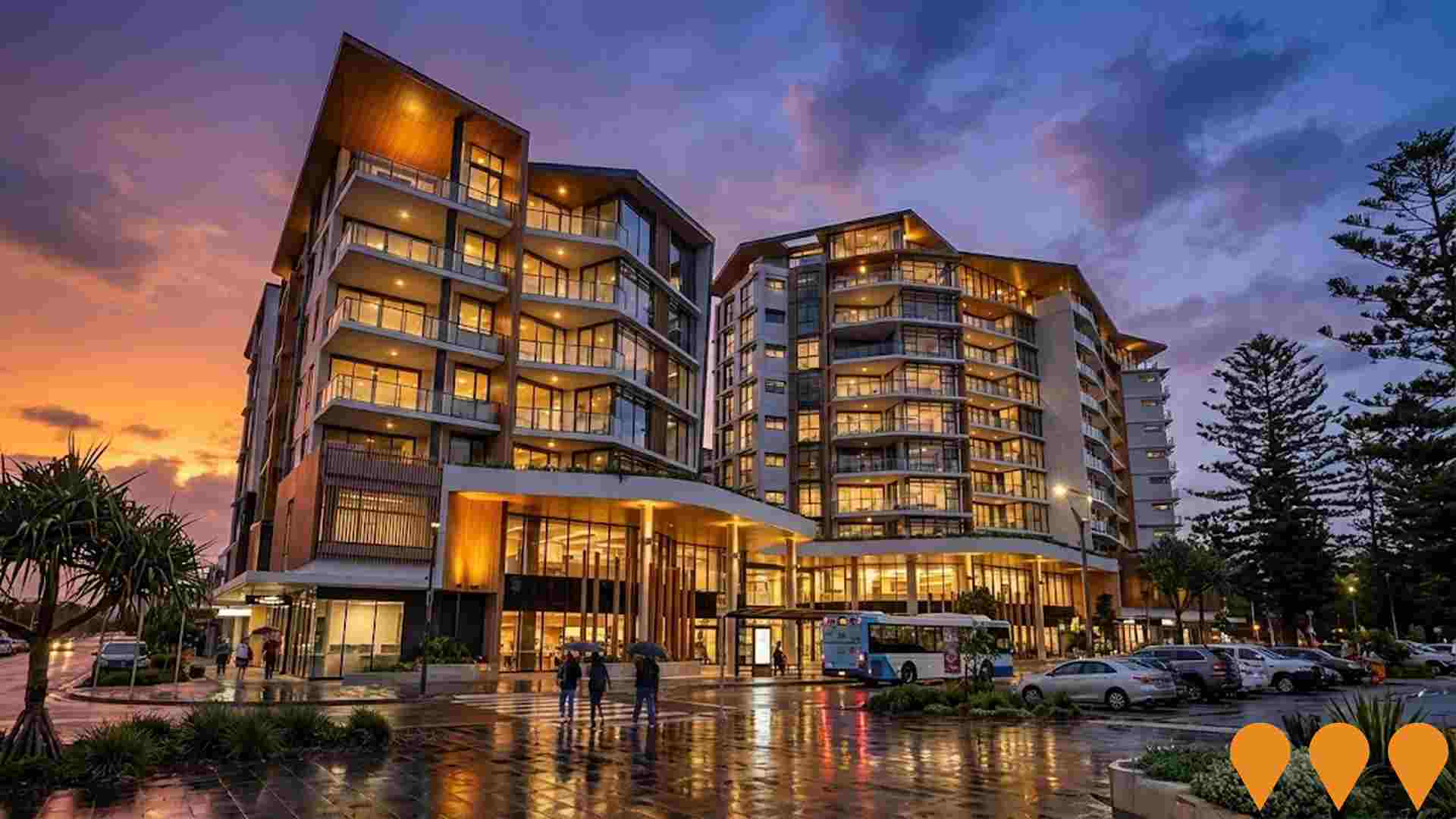
Tuncurry Village Hub Redevelopment
Redevelopment of the former Tuncurry Plaza into a modern shopping and lifestyle hub featuring fresh food, dining options, health services, community spaces, eco-friendly design, and convenient parking.

4-12 Breese Parade Large Format Retail Development
A large-format retail development offering up to 4,000 square metres of gross leasable area in the retail heart of Forster. The former MidCoast Council site was sold for $12.72 million and features prime positioning directly opposite Stockland Forster shopping centre with high exposure and accessibility. The development includes rear loading facilities and showroom space across a commanding 14,110mý site with B2 Local Centre zoning.

Forster and Old Bar New Ambulance Stations
New ambulance stations planned for Forster and Old Bar to improve emergency medical services coverage in the Great Lakes region. Part of the broader health infrastructure investment by the NSW Government to ensure emergency services are better equipped to serve the growing population in the Mid North Coast region.
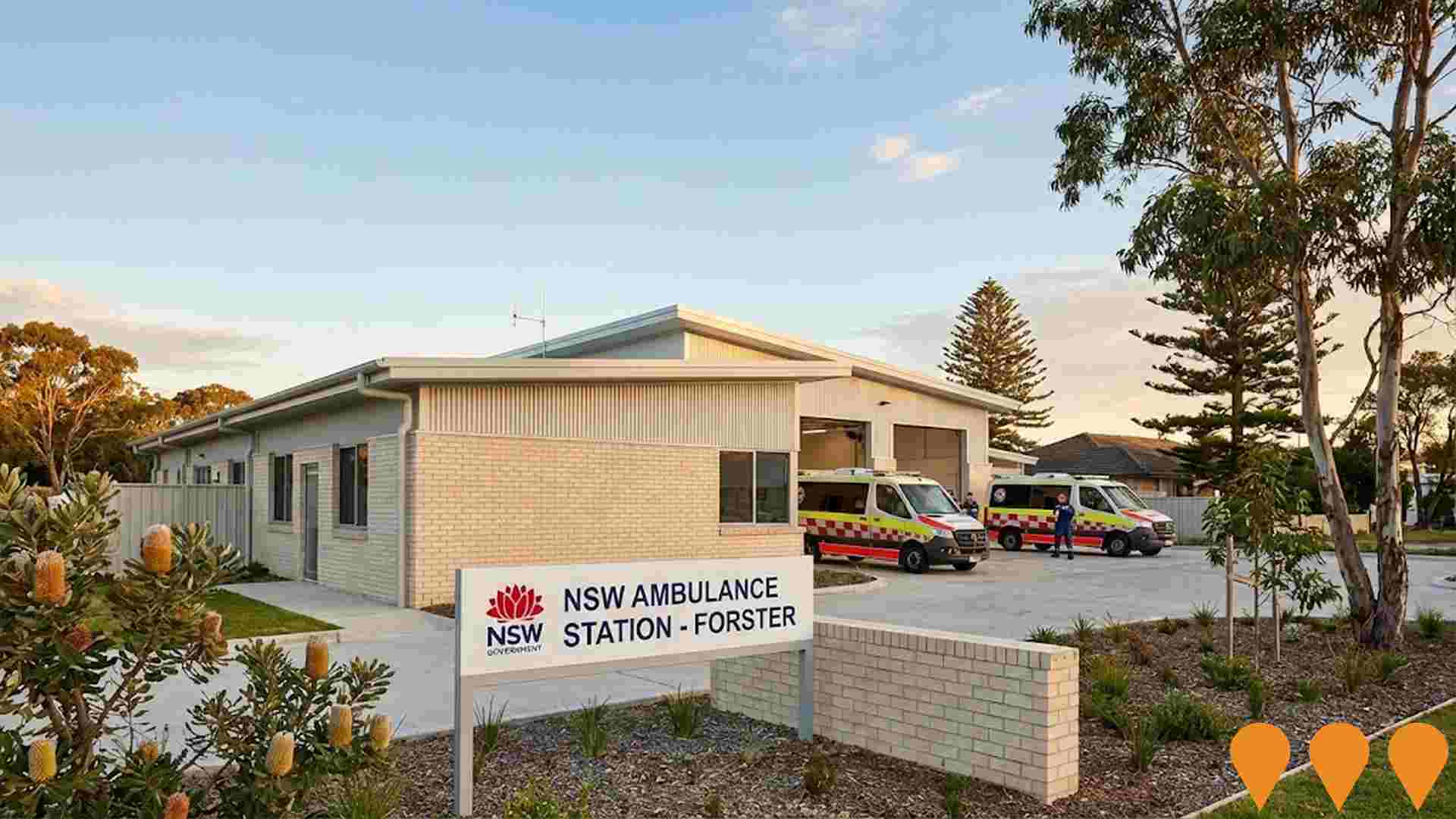
Palm Lake Resort Forster Lakes
A luxury over-50s land lease resort featuring 400 Florida Keys-inspired homes with world-class facilities including the award-winning Belleair Country Club, Rhodes Sports Club with championship bowling green, marina with pontoons, indoor/outdoor pools, luxury cinema, gymnasium, and extensive recreational amenities beside Wallis Lake.

The Lakes Way Road Upgrade - Boolambayte Section
Road reconstruction project of a 3.6km stretch of The Lakes Way at Boolambayte to the west of Saw Pit Road. The upgrade included full reconstruction of road pavement, widening of lanes and road shoulders, improved drainage, and installation of guardrails and signage to improve safety for road users.

Employment
Employment conditions in Bulahdelah - Stroud remain below the national average according to AreaSearch analysis
Bulahdelah-Stroud has a balanced workforce with both white and blue collar jobs. The construction sector is prominent, with an unemployment rate of 3.4% as of June 2025.
Employment growth over the past year was estimated at 0.5%. There are 2,528 residents in work, with an unemployment rate of 0.2% lower than Rest of NSW's rate of 3.7%. Workforce participation is lower at 50.3%, compared to Rest of NSW's 56.4%. Key industries include construction, agriculture, forestry & fishing, and health care & social assistance.
Agriculture, forestry & fishing is particularly strong with an employment share 2.3 times the regional level. Health care & social assistance has a limited presence at 12.2% compared to the regional average of 16.9%. Employment opportunities locally may be limited, as indicated by Census data comparing working population to resident population. Over the past year, employment increased by 0.5%, while labour force grew by 0.6%, maintaining a stable unemployment rate. In contrast, Rest of NSW saw an employment decline of 0.1%, labour force growth of 0.3%, and a 0.4 percentage point rise in unemployment. National employment forecasts from Jobs and Skills Australia (May 2025) project national growth of 6.6% over five years and 13.7% over ten years, with varying rates across industries. Applying these projections to Bulahdelah-Stroud's industry mix suggests local growth of approximately 5.6% over five years and 12.1% over ten years.
Frequently Asked Questions - Employment
Income
Income metrics place the area in the bottom 10% of locations nationally according to AreaSearch analysis
AreaSearch's latest postcode level ATO data for financial year 2022 shows Bulahdelah - Stroud's median income among taxpayers is $40,416, with an average of $51,385. This is lower than the national average. Rest of NSW has a median income of $49,459 and an average of $62,998. Based on Wage Price Index growth of 12.61% since financial year 2022, current estimates for Bulahdelah - Stroud would be approximately $45,512 (median) and $57,865 (average) as of September 2025. Census data shows that household, family and personal incomes in Bulahdelah - Stroud fall between the 9th and 13th percentiles nationally. Income analysis reveals that the predominant cohort spans 26.8% of locals (1,467 people) with incomes in the $400 - 799 category, differing from the surrounding region where the $1,500 - 2,999 category predominates at 29.9%. After housing costs, 85.6% of income remains, ranking at only the 15th percentile nationally.
Frequently Asked Questions - Income
Housing
Bulahdelah - Stroud is characterized by a predominantly suburban housing profile, with ownership patterns similar to the broader region
The dwelling structure in Bulahdelah - Stroud, as per the latest Census, consisted of 97.9% houses and 2.1% other dwellings (semi-detached, apartments, 'other' dwellings). This compares to Non-Metro NSW's 73.0% houses and 27.0% other dwellings. The home ownership level in Bulahdelah - Stroud was 49.2%, with mortgaged dwellings at 34.5% and rented ones at 16.3%. The median monthly mortgage repayment in the area was $1,538, while the median weekly rent figure was recorded at $300. Nationally, Bulahdelah - Stroud's mortgage repayments are lower than the Australian average of $1,863, and rents are substantially below the national figure of $375.
Frequently Asked Questions - Housing
Household Composition
Bulahdelah - Stroud has a typical household mix, with a higher-than-average median household size
Family households account for 70.5% of all households, including 24.8% couples with children, 34.4% couples without children, and 10.3% single parent families. Non-family households constitute the remaining 29.5%, with lone person households at 26.7% and group households comprising 2.8%. The median household size is 2.4 people, which is larger than the Rest of NSW average of 2.1.
Frequently Asked Questions - Households
Local Schools & Education
Bulahdelah - Stroud faces educational challenges, with performance metrics placing it in the bottom quartile of areas assessed nationally
The university qualification rate in the area is 13.6%, significantly lower than the NSW average of 32.2%. This presents both a challenge and an opportunity for targeted educational initiatives. Bachelor degrees are the most prevalent at 9.8%, followed by postgraduate qualifications (2.4%) and graduate diplomas (1.4%). Vocational credentials are also common, with 43.2% of residents aged 15 and above holding such qualifications, including advanced diplomas (10.0%) and certificates (33.2%).
Educational participation is high, with 27.4% of residents currently enrolled in formal education. This includes primary education (10.8%), secondary education (8.3%), and tertiary education (2.5%). The five schools in Bulahdelah - Stroud have a combined enrollment of 528 students. The area has varied educational conditions, with four primary schools and one K-12 school.
Frequently Asked Questions - Education
Schools Detail
Nearby Services & Amenities
Transport
Transport servicing is low compared to other areas nationally based on assessment of service frequency, route connectivity and accessibility
Bulahdelah-Stroud area has 189 active public transport stops. These are served by a mix of train and bus services, with 44 individual routes in total. The combined weekly passenger trips from these routes amount to 375.
Residents' average distance to the nearest transport stop is 570 meters, indicating moderate accessibility. Daily service frequency averages 53 trips across all routes, translating to roughly one weekly trip per stop.
Frequently Asked Questions - Transport
Transport Stops Detail
Health
Health performance in Bulahdelah - Stroud is well below average with prevalence of common health conditions notable across both younger and older age cohorts
Bulahdelah - Stroud faces significant health challenges, with high prevalence of common conditions across both younger and older age groups. Private health cover is low at approximately 46%, compared to the national average of 55.3%.
The most prevalent medical conditions are arthritis (12.0%) and mental health issues (8.9%). 61.1% of residents report no medical ailments, higher than Rest of NSW's 56.6%. 26.8% of residents are aged 65 and over (1,466 people), lower than the 36.0% in Rest of NSW. Despite this, health outcomes among seniors present challenges, performing better than the general population in some health metrics.
Frequently Asked Questions - Health
Cultural Diversity
The latest Census data sees Bulahdelah - Stroud placing among the least culturally diverse areas in the country when compared across a range of language and cultural background related metrics
Bulahdelah-Stroud had a cultural diversity index below the average, with 89.0% of its population being Australian citizens, 90.5% born in Australia, and 97.8% speaking English only at home. Christianity was the predominant religion, accounting for 57.8% of the population, compared to 58.5% across the Rest of NSW. The top three ancestry groups were Australian (34.4%), English (33.5%), and Irish (8.3%).
Notably, Australian Aboriginal people were overrepresented at 4.8%, compared to 4.3% regionally, as were Maltese at 0.6% (vs 0.5%) and Scottish at 7.7% (vs 8.0%).
Frequently Asked Questions - Diversity
Age
Bulahdelah - Stroud ranks among the oldest 10% of areas nationwide
Bulahdelah - Stroud's median age as of 2021 was 51 years, significantly higher than the Rest of NSW average of 43 and considerably older than the Australian median of 38. Compared to the Rest of NSW average, the 55-64 cohort made up 17.5% of Bulahdelah - Stroud's population, which is notably over-represented compared to the national figure of 11.2%. Meanwhile, the 25-34 age group was under-represented at 6.5%. Post-Census data shows that from June 2021 to June 2022, the 15-24 age group grew from 8.7% to 10.7%, and the 35-44 cohort increased from 8.8% to 10.2%. Conversely, the 45-54 cohort declined from 14.4% to 12.3%, and the 25-34 group dropped from 8.3% to 6.5%. By 2041, Bulahdelah - Stroud is projected to experience significant shifts in its age composition. The 35-44 group is expected to grow by 12%, reaching 68 people and a total of 629 from the previous figure of 560. The aging population trend is evident, with those aged 65 and above comprising 58% of projected growth. Conversely, both the 65-74 and 45-54 age groups are expected to see reduced numbers.
